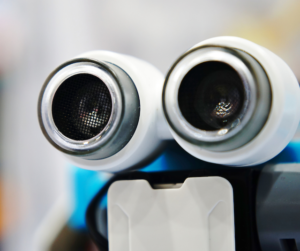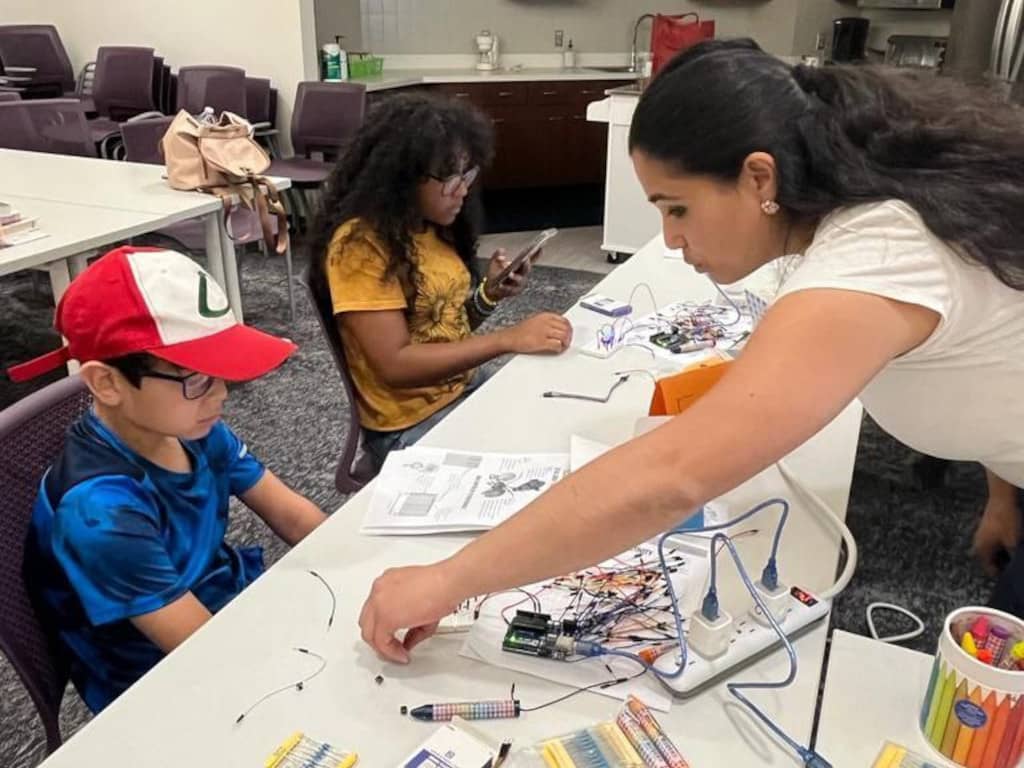Sensors and their remarkable role in the world of robotics

This month we continue our topic about the essential parts of a robot and we will focus on sensors: these have the function of collecting data or information about the activity performed by the robot as well as the environment in which it is located to record different measurements related to temperature, speed, altitude, weight, orientation, distance, among others in order to process these values and store them for analysis.
Do you know the different types of sensors that exist today, would you be able to name any of them at this moment? let’s get to know some of them:
- Force sensor. They allow the measure the force applied to an object with precision, these sensors can be found in industrial robotic arms in assembly factories.
- Tactile sensor. Allows the robot to sense physical objects around it, the capacitive touch sensor uses electrical conductivity properties to detect objects as well as the resistance touch sensor by using the application of pressure to detect objects.
- Temperature sensor. These allow a robot to measure the temperature around it, they have application in scientific research.
- Light sensor. These allow a robot to detect changes in light intensity, they are useful in disaster areas with confined spaces to find possible exit routes.
- Sound sensor. These allow a robot to compare sound amplitudes in value ranges to analyze the data and determine the distance of objects.
- Chemical sensor. They allow robots to detect chemical properties in water or air samples in an environment potentially hazardous to a living being, this data is useful for measuring alkalinity and acidity values in soils and rivers as well as CO2 levels in the air.
- Proximity sensor. These sensors allow a robot to detect proximity with respect to other objects.
- Infrared sensor. These allow to detect changes in the values of infrared radiation.
- Ultrasonic distance sensor. These sensors emit high-frequency sounds that bounce off the surface of the surrounding medium and return to the robot.
- Positioning / navigation sensor. Those are used to determine the position or speed of a robot with the help of signals emitted by space satellites received by the robot, such is the case of the GPS system.
- Digital magnetic field sensor. Provides directional measurements, using the earth’s magnetic field, to guide the robot in the correct direction to its destination.
- Acceleration sensor. Also called accelerometer, it measures the acceleration and inclination of the robot. There are two forces that affect an accelerometer: the Static Force or friction between two objects such as the gravitational force of the earth (the force with which the earth attracts objects to it), this allows to measure the inclination in the position of the robot. Then we have a second force, the Dynamic Force which is the amount of acceleration that an object requires to move.
- Gyroscope. If we do not want or cannot make a robot depend on the gravitational force of the earth to maintain its orientation, the gyroscope helps us to maintain the orientation of a robot by measuring the rate of rotation around a particular axis.
- Voltage Sensor. They convert high voltages to low voltages and vice versa, they allow to find the potential difference between two extremes, there are electronic circuits that monitor the constant flow in an electrical circuit.
Nowadays, technology allows robots to learn from the data they collect, so robots are in the process of becoming important support tools for humans.
So far we have been able to learn important concepts of robotics and understand a little of its importance. In our third installment we will talk about another very interesting topic.
Remember, if you find this topic interesting share it with your friends and on your social networks, don’t forget to follow us on Instagram and Facebook.










Thanks for sharing. I read many of your blog posts, cool, your blog is very good.